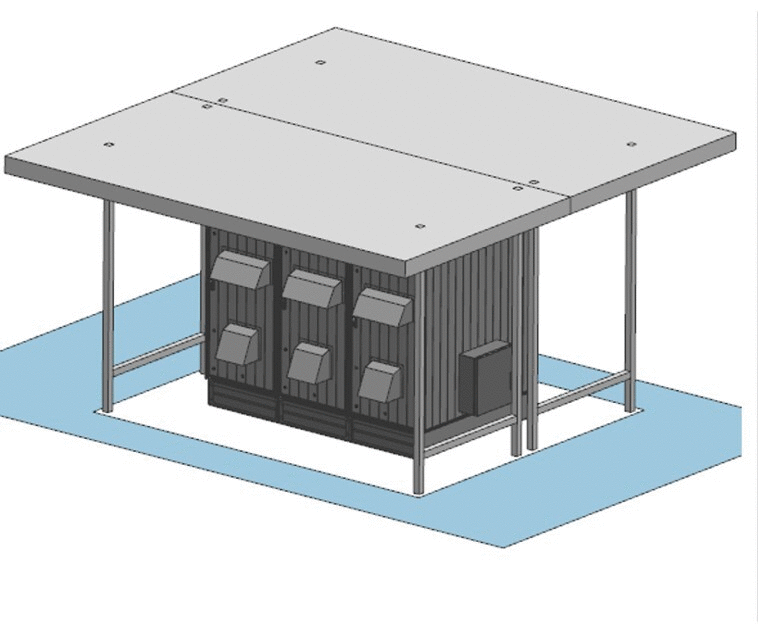Daily Image
03-09-2021Some shadow for LOFAR cabinets, please..!
| Submitter: | Arno Schoenmakers and the LOFAR2.0 Cabinet Team |
| Description: | Over the last few years, there have typically been 15-20 days each summer when LOFAR observations had to stop during daytime due to overheating of LOFAR station cabinets. To lower the number of days lost in such a way, a program has been started to look at improvements in the cabinet cooling capacity. This is especially relevant for LOFAR2.0 Station development: The goal to observe using all HBA and LBA antennas simultaneously will generate additional heat in the cabinets as compared to LOFAR1, and therefore LOFAR2.0 will require additional cooling capacity. In the ASTRON backyard, we have erected a LOFAR test cabinet, primarily meant for LOFAR2.0 equipment testing. This cabinet has been named the Dwingeloo Test Station, or shorthand DTS. At this moment, the cabinet is available and used for measuring cooling capacity and testing additional solutions. A significant contribution to the overheating of LOFAR1 cabinets is the direct influx of solar radiation on the cabinet. A simple way to lower the amount of solar influx is to add a sunroof to the cabinets. To measure the real effect of a simple sunroof, a metal bike shed has been purchased and erected above the DTS cabinet. A nice side effect of this construction is that it also allows for more maintenance activities on rainy days, and that it protects the maintenance engineer from the sun on clear, warm days. One of the tests we performed is to measure the temperature inside the cabinet for a full day, both with and without the roof. The days during which we measured were close to each other and similar in sun load, ambient temperature and wind conditions. During the measurement we did not activate the cooling, in order to measure the effects of solar heat influx only. The graph shows the measurement after conversion of temperatures to heat load. The orange line shows the theoretical maximum sunload on the whole cabinet (so three compartments), the dark blue line the amount of heat influx as measured in the leftmost cabinet (which is irradiated at the end of the day, mostly) without the sunroof, and the light-blue line is with the sunroof in place. The difference is well visible, as expected. The measurements show that the sunroof decreases the inside cabinet temperature by roughly three degrees Celsius. This is the equivalent of 900W of cooling capacity for the cabinet as a whole. What's left is due to irradiation from the heated sunroof itself, build-up of heat under the roof and direct irradiation from the sun at lower elevations (i.e., sunlight passing under the sunroof). Activities to erect similar sunroofs at all Dutch LOFAR stations are underway. This is an important first step to improve the availability of LOFAR stations during warm summer days. Further investigations will follow this one, such as investigating the amount of recirculation of warm air due to the positioning of the air inlets and outlets and more efficient air circulation inside of the subracks and the cabinets. This achievement has been the work of quite some people: To build the sunroof, build and install the measurement equipment, build the computer models, and interpret the observations. Special thanks to Jeroen Herrewijnen, Sjouke Kuindersma, Jorrit Siebenga, Henri Meulman, Peter Gruppen, Marchel Gerbers! |
| Copyright: | ASTRON |
| Tweet |  |
